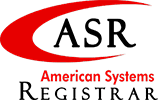Leading O2 Cleaning, Passivation & Electropolishing: Oklahoma City
Leading o2 cleaning, passivation & electropolishing for Oklahoma City. We’ve been doing this for over 30+ years. Call for a quote.
Oklahoma City is the capital and largest city of the state of Oklahoma. The county seat of Oklahoma County, the city ranks 27th among United States cities in population. The population grew following the 2010 Census, with the population estimated to have increased to 616,411 as of July 2014. As of 2014, the Oklahoma City metropolitan area had a population of 1,319,677, and the Oklahoma City-Shawnee Combined Statistical Area had a population of 1,459,758 (Chamber of Commerce) residents, making it Oklahoma’s largest metropolitan area.
Oklahoma City’s city limits extend into Canadian, Cleveland, and Pottawatomie counties, though much of those areas outside of the core Oklahoma County area are suburban or rural (watershed). The city ranks as the eighth-largest city in the United States by land area (including consolidated city-counties; it is the second-largest city in the United States by land area whose government is not consolidated with that of a county).
Oklahoma City, lying in the Great Plains region, features one of the largest livestock markets in the world. Oil, natural gas, petroleum products and related industries are the largest sector of the local economy. The city is situated in the middle of an active oil field and oil derricks dot the capitol grounds.
The federal government employs large numbers of workers at Tinker Air Force Base and the United States Department of Transportation’s Mike Monroney Aeronautical Center (these two sites house several offices of the Federal Aviation Administration and the Transportation Department’s Enterprise Service Center, respectively).
Oklahoma City is on the I-35 Corridor and is one of the primary travel corridors into neighboring Texas and Mexico. Located in the Frontier Country region of the state, the city’s northeast section lies in an ecological region known as the Cross Timbers. The city was founded during the Land Run of 1889, and grew to a population of over 10,000 within hours of its founding.
The city was the scene of the April 19, 1995 bombing of the Alfred P. Murrah Federal Building, in which 168 people died. It was the deadliest terror attack in the history of the United States until the attacks of September 11, 2001, and remains the deadliest act of domestic terrorism in U.S. history.
Since the time weather records have been kept, Oklahoma City has been struck by nine strong tornadoes: eight F/EF4s and one F5.
Although in its early days oil dominated the economy, Oklahoma City today hosts a wide range of businesses and employers. Agriculture, energy, aviation, government, health care, manufacturing, and industry all play major roles in the city’s economic well-being. Oklahoma City is the seat of government for the state of Oklahoma as well as Oklahoma County. There are also many regional federal agency offices located in the City. The government sector accounts for about 20 percent of the Oklahoma City metropolitan area non-agricultural employment.
The health care industry is a major economic driver in the city. Mike Monroney Aeronautical Center, which is the largest trainer of Air Traffic Controllers in the world, and Tinker Air Force Base are major drivers as well. As the largest industrial operation in Oklahoma, Tinker serves the U.S. Air Force as a repair depot and provides logistic services for the U.S. Air Force throughout the world.
Tinker employs 26,000 military and civilian personnel with a combined annual payroll of more than $775 million. There is also a growing high technology sector in the Oklahoma City economy, with more than 400 companies employing 30,000 in the fields of high technology, information technology, and software development.
As one of the nation’s largest processing centers for a variety of farm products, the city is home to the world’s largest stocker and feeder cattle market. Horses are also big business in Oklahoma City, stretching back to the region’s days as a key cattle center and gateway to westward expansion. The city is known as the Horse Show Capital of the World for the nine major national and international horse shows held annually. Many large oil and energy-related companies have headquarters or major branches in the city.
Other present and projected future growth industries include fabricated metal, computers, clothing, oil-field equipment, crude oil, back office, distribution and food processing.
Items and goods produced are motor vehicles, food products, steel, electronic devices, computers, oil-well supplies, paper products, rubber tires.
